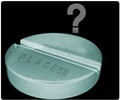Scientists have discovered a gene behind increased vulnerability to the 'placebo effect'- the mysterious capacity which enables some people to benefit from sham treatments.
The pharmacological phenomenon placebo has long remained a mystery – the ability for certain people benefit from sham treatments. Now, scientists have unraveled a gene which has a role to play in the increased vulnerability to the 'placebo effect'.
The finding could be considered a milestone in the quest to understand the phenomenon, which often blurs the results of clinical trials.And the finding came despite the fact the gene is not vital to a person's response to treatment for all conditions and the experiment involved only a small number of people.
"To our knowledge, it's the first time anyone has linked a gene to the placebo effect," New Scientist quoted Tomas Furmark of Uppsala University in Sweden as saying.
For the study, the researchers enrolled 25 people with an exaggerated fear of public humiliation, also known as social anxiety disorder.
The experiment required the participants to give a speech at the start and end of an eight-week treatment-actually a placebo-which was not disclosed to them and their doctors.
It was found that ten volunteers responded to the placebo much better than the rest.
Advertisement
According to the brain scans, it was found that the activity in the amygdala, the brain's "fear" centre, had dropped by 3 per cent.
Advertisement
According to earlier studies, people with two copies of a particular "G" variant are less anxious in standard "fear" tests.
And 8 of the 10 responders had two copies of the factor, while it was not seen at all in any of the non-responders.
Source-ANI
TAN











